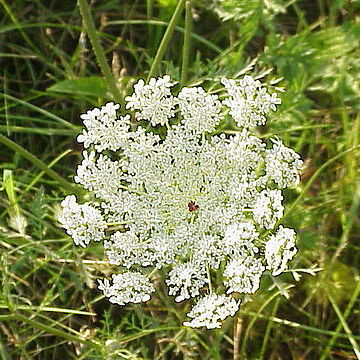Fr-body oblong or ovoid, flattened dorsally, the primary ribs low, with a row of short inconspicuous bristles, the 4 secondary ribs prominently winged, the wing divided into a row of flattened-subulate, hooked or straight spines; oil-tubes 1 under each secondary wing, 2 on the commissure; carpophore entire or bifid at the top; umbels compound, terminal and from the upper axils, long-pedunculate; bracts commonly large, pinnately dissected; bractlets linear or rarely pinnate; fls mostly white, the marginal ones often enlarged and irregular; stylopodium conic; annual or biennial herbs with pinnately decompound lvs. 60, widespread.
Annual or biennial herbs, usually hairy. Lvs (1)-2-3-pinnate; segments usually narrow. Umbels usually compound, rarely simple, pedunculate; bracts and bracteoles numerous or 0, entire, pinnate or pinnatisect. Petals white, pink, yellow or purplish, usually irregular, with apex notched and inflexed; calyx teeth small or 0. Fr. ellipsoid to ovoid, terete or somewhat flattened dorsally, not beaked, commissure narrow; ribs 9 per mericarp, primary filiform and usually ciliate, secondary stouter and spinous; vittae solitary.
Umbels us. compound, bracts us. ∞; calyx-teeth small or obsolete; petals white to red, notched, inflexed at apex. Fr. ± ovoid-cylindric. Mericarps convex; 5 primary ribs very slender, us. with double row of short spreading bristles; 4 secondary ribs prominent, with a row of conspicuous glochidiate bristles. Vittae under primary ridges. Annual to biennial tap-rooted herbs with few to many branches; lvs pinnately compound. About 60 spp., mostly of northern hemisphere.

